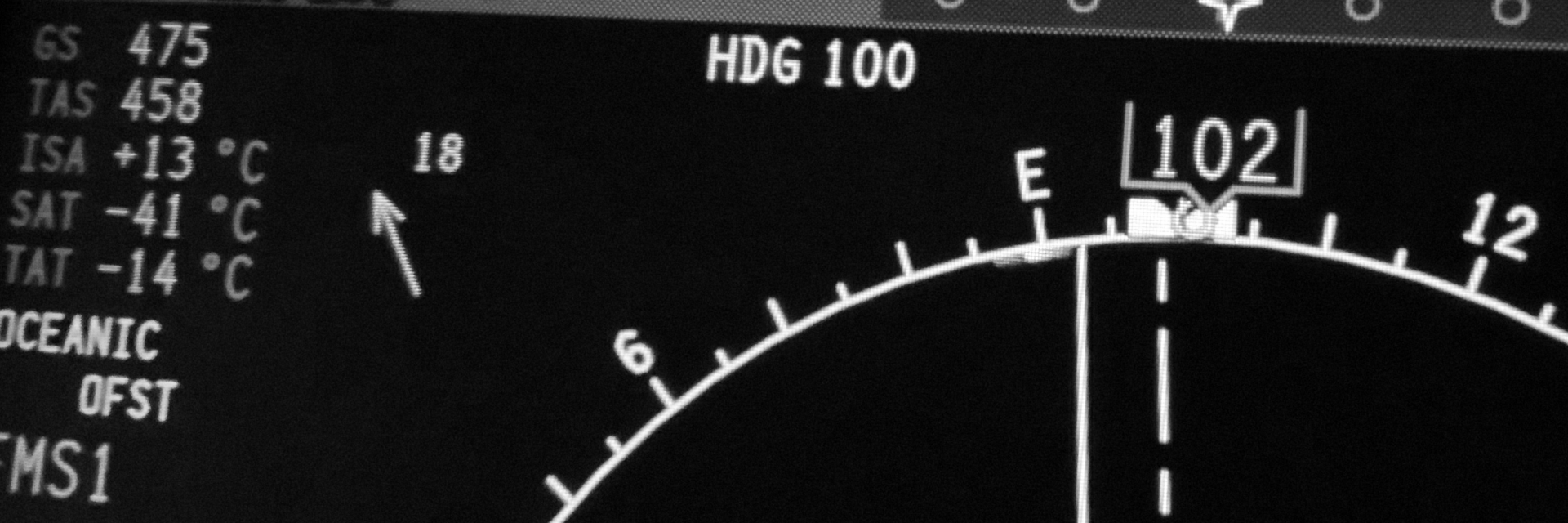
Dial in CAS, TAS, Mach or EAS. The other corresponding speeds update instantly.
Values display in Knots, kilometers per hour, miles per hour, and meters per second.
Change altitude or temperature, and immediately see the effect on all the speeds.
The locked speed (in CYAN, and with a padlock) will stay constant when altitude is changed.
To select which speed is locked, tap inside its cyan frame.
To toggle between 1000-, 100- and 1-foot altitude increments, tap the Altitude/Rate thumbwheel repeatedly.
Static Air Temperature (SAT) follows the International Standard Atmosphere (ISA) lapse rate as you change the altitude (from -2 000 up to 100 000 feet).
Speeds reflect a temperature change immediately (with the locked speed being kept constant).
The appropriate lapse rate for the 3 lowest layers of the International Standard Atmosphere is used.
Adjust SAT (or ISA deviation) for the current altitude.
All speeds update accordingly.
The selected ISA variation is maintained when altitude changes are made.
Temperature Rise and Total Air Temperature (TAT) are shown.
Rise and TAT update automatically for any change to speed, altitude or temperature.
Adjust the air data probe Recovery Coefficient (Ct).
Most modern aircraft have a coefficient of 1.0. Can be reduced down to 0.6.
Adjust as necessary for your aircraft’s value, and see corresponding values for Rise and TAT.
Quickly find what the ISA temperature is at any altitude.
Dial in the altitude, and set ISA deviation to 0. The SAT value shown is the ISA temperature for that altitude.
Note: Temperature and recovery coefficient are controlled with up and down arrows, rather than a thumbwheel, for space reasons on iOS devices with smaller displays.
Crossover (Changeover) Altitude
Crossover altitude is relevant in climbs and descents, and varies depending on the combination of IAS and Mach number you choose to fly when climbing (and descending). Your Aircraft Flight Manual provides suitable combinations.
At crossover altitude, you would change your primary speed reference from IAS to Mach in a climb, and vice-versa during descent.
E6BJet computes the actual crossover altitude, for the selected combination of CAS (*) and Mach you have entered in the CROSSOVER portion of the display.
(*) In most modern aircraft with Air Data Computers, there will be no difference between IAS and CAS. If necessary, convert between IAS and CAS per data provided in your Aircraft Flight Manual.
Modern avionics may switch indications automatically in climbs or descents, but usually do so at a fixed altitude appropriate for climbs, rather than calculating the specific crossover altitude.
Always beware of speed loss during climbs to altitude!
During Emergency descents at MMO (and then VMO), awareness and anticipation of the correct crossover altitude are quite important. On reaching crossover altitude, failure to pitch up in order to now fly at VMO can very quickly result in an overspeed condition.
Auto-crossover mode
When enabled, Mach number will automatically become “locked” for further altitude changes if altitude is dialed up above the calculated crossover altitude. Conversely, when altitude is dialed down below the crossover altitude, the “lock” will automatically move to CAS.
This is similar to the automatic changeover between IAS and Mach some avionics perform.
To enable, tap the X-OVER button. Tap again to disable.
Turn Calculations
Knowing turn dimensions can be critical during circling approaches, or when airspace or obstacles constrain manoeuvering.
Turn dimensions are affected by speed and bank angle, but also altitude and temperature.

Turn information is computed for the selected speed, altitude and temperature, and includes:
- Turn rate;
- Bank angle;
- Load factor;
- Turn radius, diameter, or circumference (of a 360-degree turn), in various units;
Bank angle used for calculations defaults to 28 degrees, but can be changed.
To change it, tap on the bank angle value, and use the thumbwheel underneath to adjust the value.
Other values update instantly.
Display turn Radius, Diameter or Circumference.
Tap the value to toggle between Radius, Diameter or Circumference values.
The circumference value is for a full 360-degree turn.
NOTE: Dimensions are for steady-state, constant bank turns. Roll-in and roll-out are not considered.
Show Dimensions in Nautical Miles, kilometres, feet, metres or Statute Miles.
Tap the units value to cycle through NM, KM, FT, M and SM.
Turn rate is also shown, and can be changed.
To enter a desired rate, tap on the value, then adjust it with the thumbwheel directly below.
Angle of bank will update to the value required for the rate you specified.
Keep either bank angle or turn rate constant for calculations.
Tap the rate twice to lock it. Speed and other changes will now recalculate the bank angle instead of the turn rate.
Tap the bank angle twice to lock it, and have changes cause recalculation of the turn rate while keeping the bank angle fixed.
NOTE: After 4 seconds without changes to angle or rate, the values will dim and thumbwheels will revert to control EAS and altitude respectively.
Load factor for the selected bank angle is shown above the bank angle value.
Reset button
Hold button for 3 seconds to return all values to the default settings:
- Altitude: 0 feet;
- Temperature: ISA;
- CAS: 250 Knots;
- Ct: 1.0;
- crossover CAS: 250 Knots, Mach: 0.7;
- Bank angle: 28 degrees;
- Turn dimension units: Nautical miles.
Click here to return to the home page.
